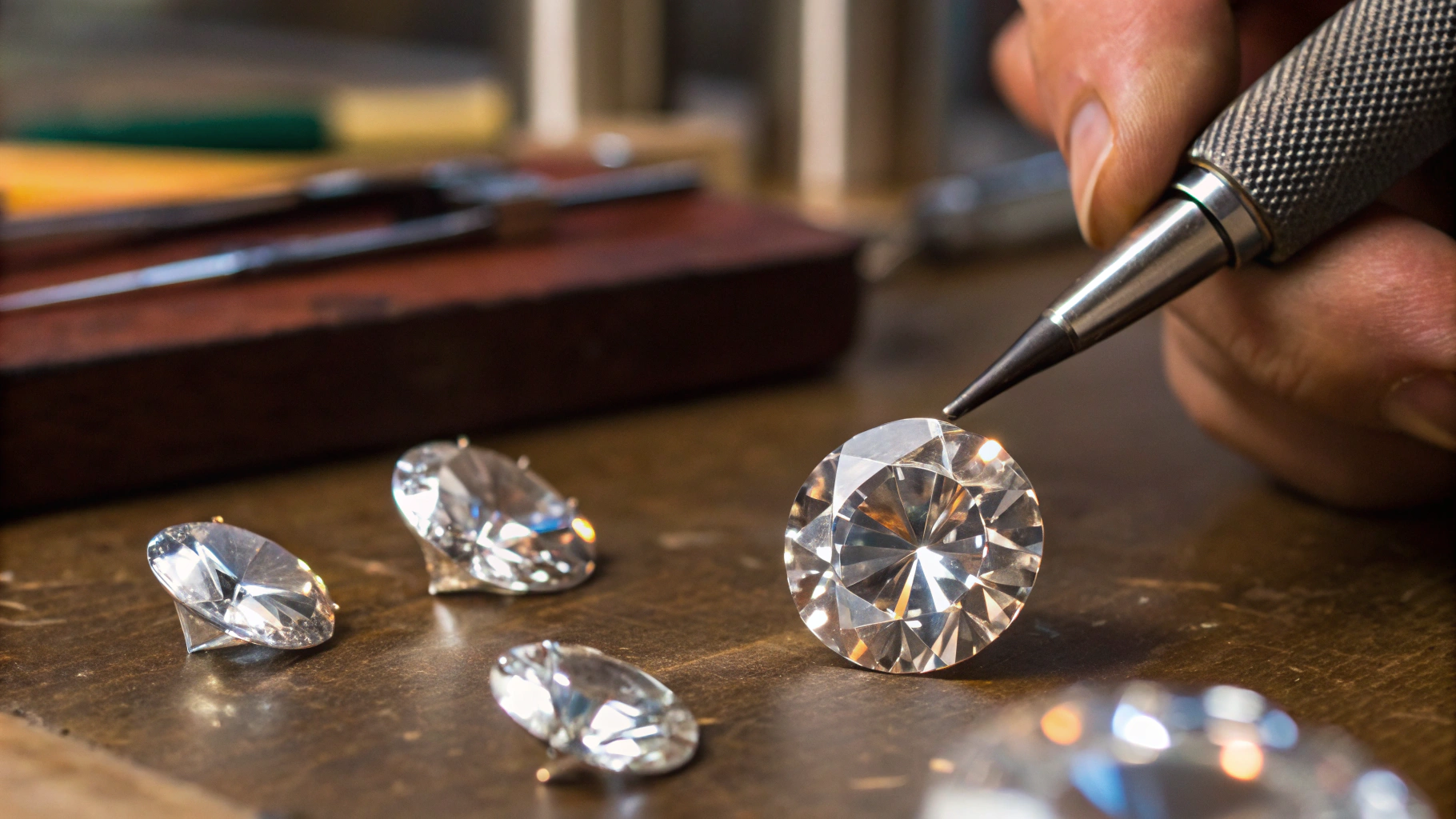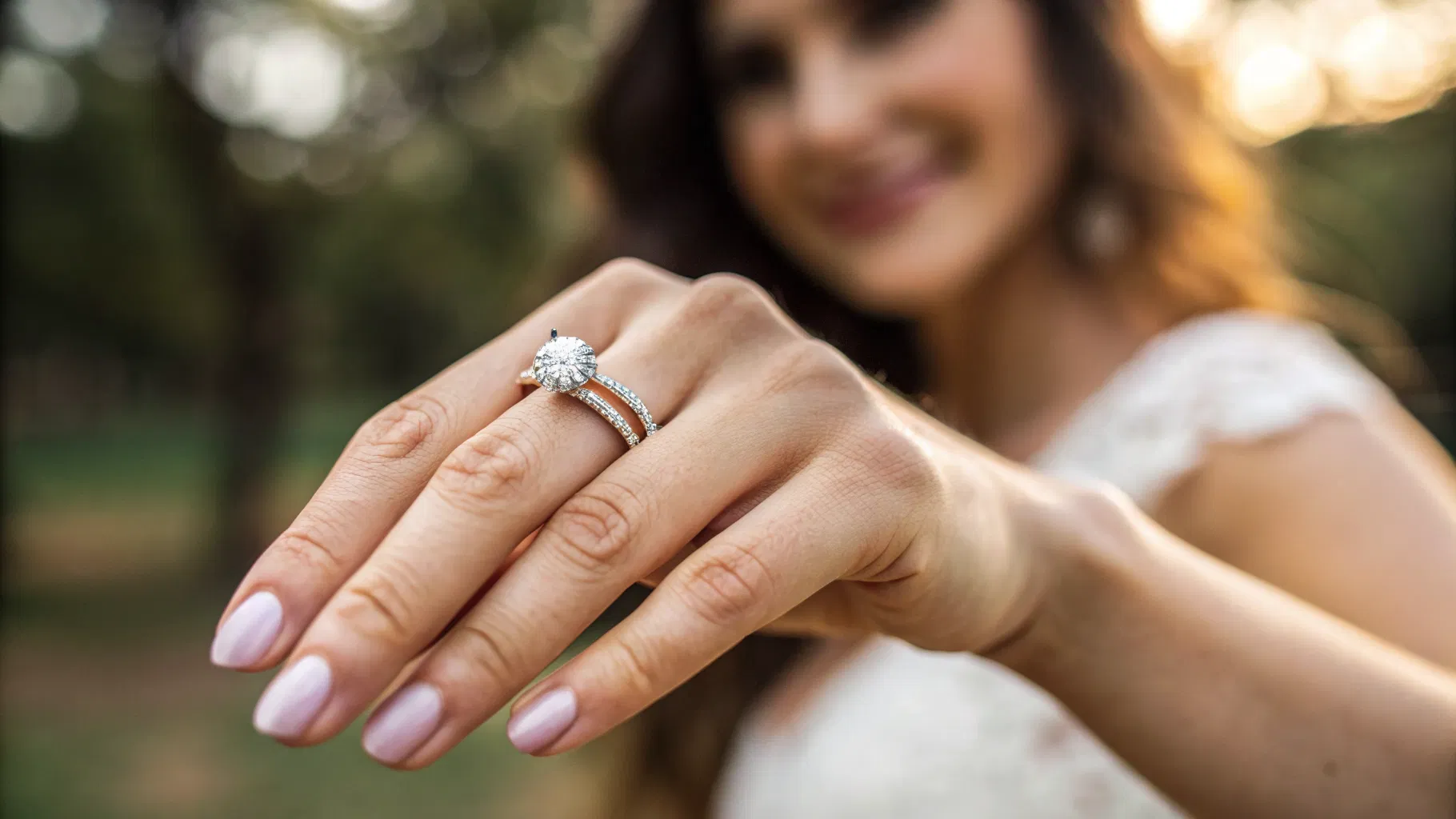
Where Are Diamonds Cut and Polished? A Comprehensive Guide
Introduction
Can true luxury also be truly ethical? This question resonates deeply in today's world, where the demand for sustainable and personalized luxury is growing exponentially. As conscious consumers, we are increasingly aware of the stories behind the products we choose, especially when it comes to precious items like diamonds. At DiamondsByUK, we are proud to be part of a movement that redefines luxury by making ethical, conflict-free diamond jewelry accessible to everyone.
Are you dreaming of a piece of jewellery that’s as unique as your story? Understanding where diamonds are cut and polished is a crucial element in this journey. The diamond industry, shrouded in mystery and allure, has fascinating processes that transform rough stones into exquisite gems. In this blog post, we'll explore the diamond cutting and polishing process, delve into the historical and contemporary diamond cutting centers, and highlight the importance of choosing ethical lab-grown diamonds.
Join us as we embark on this enlightening journey to discover not only the technical aspects of diamond cutting but also the ethical implications of our choices. With our commitment to sustainability and integrity, we aim to empower you to make informed decisions about your jewelry purchases. Let’s dive into the world of diamonds, where craftsmanship meets conscience.
The Diamond Cutting Process: An Overview
1. The Journey from Rough to Refined
Before a diamond can shine brilliantly in a piece of jewelry, it must undergo a meticulous transformation from its rough state to a polished gem. The diamond cutting process involves several critical steps:
- Planning: Each rough diamond is carefully analyzed to determine the best way to cut and maximize yield. This includes identifying inclusions and determining the optimal shape.
- Cleaving/Sawing: The rough diamond is either cleaved along its natural planes or sawn into smaller pieces using a diamond saw.
- Bruting: This process rounds the diamond to create its girdle, preparing it for faceting.
- Polishing: The facets are polished to enhance the diamond’s brilliance.
- Final Inspection: Each diamond undergoes a meticulous quality check to ensure it meets the required standards.
Understanding this process is crucial as it impacts the quality, value, and ethical considerations of the diamond you choose.
2. The Importance of Cut Quality
The cut of a diamond is one of the most significant factors in determining its beauty and value. It affects how well the diamond reflects light, which is crucial for its sparkle. The Gemological Institute of America (GIA) grades the cut based on:
- Proportions: The angles and dimensions of the diamond.
- Symmetry: How well the facets align.
- Finish: The quality of polishing.
A well-cut diamond can make a significant difference in both aesthetic appeal and market value. When selecting a diamond, consider the importance of cut quality and its impact on your piece’s overall appearance.
Historical Context: Where Diamonds Were Cut
1. The Birthplace of Diamond Cutting
Historically, diamond cutting began in Europe, with the first guild of diamond cutters established in Nuremberg, Germany, in 1375. During this time, the craft was rudimentary, primarily focusing on the basic shapes like the point cut, which followed the natural octahedral shape of rough diamonds.
2. Evolution of Diamond Cutting Centers
As demand for diamonds grew, so did the need for skilled labor and innovation in cutting techniques. Over the centuries, key diamond cutting centers emerged:
- Antwerp, Belgium: Renowned for its expertise in the diamond trade, Antwerp remains a vital hub for diamond cutting and trading, particularly for larger stones and fancy diamonds.
- Tel Aviv, Israel: The Israeli diamond industry is noted for its technological advancements and has developed a reputation for cutting large, high-value diamonds.
- New York City, USA: Home to sophisticated technology and specialized skills, NYC is known for producing fancy cuts that are in high demand.
Contemporary Diamond Cutting Centers
1. India: The Global Leader
Today, India stands out as the world leader in diamond cutting and polishing. Approximately 90% of the world's diamonds are cut and polished in Surat, a city in Gujarat. The reasons for India's dominance include:
- Skilled Workforce: India boasts a large pool of skilled artisans trained in traditional cutting techniques, making it a cost-effective location for diamond processing.
- Economic Factors: The cost of cutting and polishing in India is significantly lower than in many Western countries. This has led to the establishment of numerous cutting factories, creating millions of jobs.
2. China: A Rising Contender
China has rapidly emerged as a significant player in the diamond cutting industry, particularly in cities like Guangzhou and Shenzhen. The country has gained approximately 17% of the market share in recent years due to:
- Investment in Technology: The adoption of advanced cutting technologies has allowed China to compete effectively in both quality and price.
- Growing Domestic Demand: As the Chinese middle class expands, so does the demand for fine jewelry, prompting an increase in local cutting capabilities.
Ethical Considerations in Diamond Cutting
1. The Rise of Lab-Grown Diamonds
As consumers become more conscious of the ethical implications of their purchases, lab-grown diamonds have gained traction. These diamonds are created in controlled environments and are 100% conflict-free. At DiamondsByUK, we specialize in offering IGI-certified lab-grown diamonds that uphold our core values of sustainability, integrity, and craftsmanship.
2. Transparency in Certification
When purchasing a diamond, it’s essential to ensure that it comes with transparent certification. Our lab-grown diamonds are accompanied by certification from recognized bodies, providing assurance of their origin and quality. This transparency is a vital part of our commitment to ethical luxury.
Customization: The DiamondsByUK Difference
1. Bespoke Design Services
At DiamondsByUK, we understand that each piece of jewelry is deeply personal. That’s why we offer a bespoke design service, allowing you to create a piece that reflects your individuality and story. Whether it’s an engagement ring or a custom pendant, our skilled artisans work with you to bring your vision to life.
2. Quick Turnaround Times
With a typical turnaround time of just 1-2 weeks, our customization services ensure that you receive your unique piece without a lengthy wait. We pride ourselves on our craftsmanship and dedication to customer satisfaction.
3. Easy Custom Design Inquiries
Ready to start your custom design journey? We invite you to Contact Us to Create Your Unique Piece – almost any design is fully customizable. Our team is here to assist you every step of the way.
Conclusion
As we’ve explored, the journey of a diamond from rough stone to polished gem is a complex process involving skilled craftsmanship, historical significance, and ethical considerations. Understanding where diamonds are cut and polished is essential for making informed choices about your jewelry.
Choosing lab-grown diamonds not only supports ethical practices but also allows you to enjoy exquisite pieces that are beautifully crafted and accessible. At DiamondsByUK, we are committed to redefining luxury through sustainable, conflict-free diamond jewelry that you can trust.
So, whether you’re looking for a bespoke engagement ring or a unique piece for a special occasion, we encourage you to explore our offerings. Remember, your choices can make a difference in the world of luxury jewelry.
Are you ready to design your bespoke jewellery with DiamondsByUK? Start your Custom Design Journey today, often with delivery in just 1–2 weeks!
FAQ
1. What is the process of cutting and polishing diamonds?
Cutting and polishing diamonds involves several stages, including planning, cleaving, bruting, polishing, and final inspection. Each stage is crucial in transforming a rough diamond into a brilliant gemstone.
2. Where are diamonds primarily cut today?
Today, the majority of diamonds are cut in Surat, India, with significant cutting also taking place in China, Belgium, Israel, and the USA.
3. What are lab-grown diamonds?
Lab-grown diamonds are diamonds created in controlled environments that are chemically and physically identical to natural diamonds. They are 100% conflict-free and often more affordable.
4. How long does it take to create a bespoke piece of jewelry at DiamondsByUK?
Our bespoke jewelry typically has a turnaround time of just 1-2 weeks, allowing you to receive your unique piece quickly.
5. How can I start a custom design inquiry with DiamondsByUK?
To start your custom design inquiry, simply Contact Us to Create Your Unique Piece – almost any design is fully customizable. Our team is ready to assist you!


